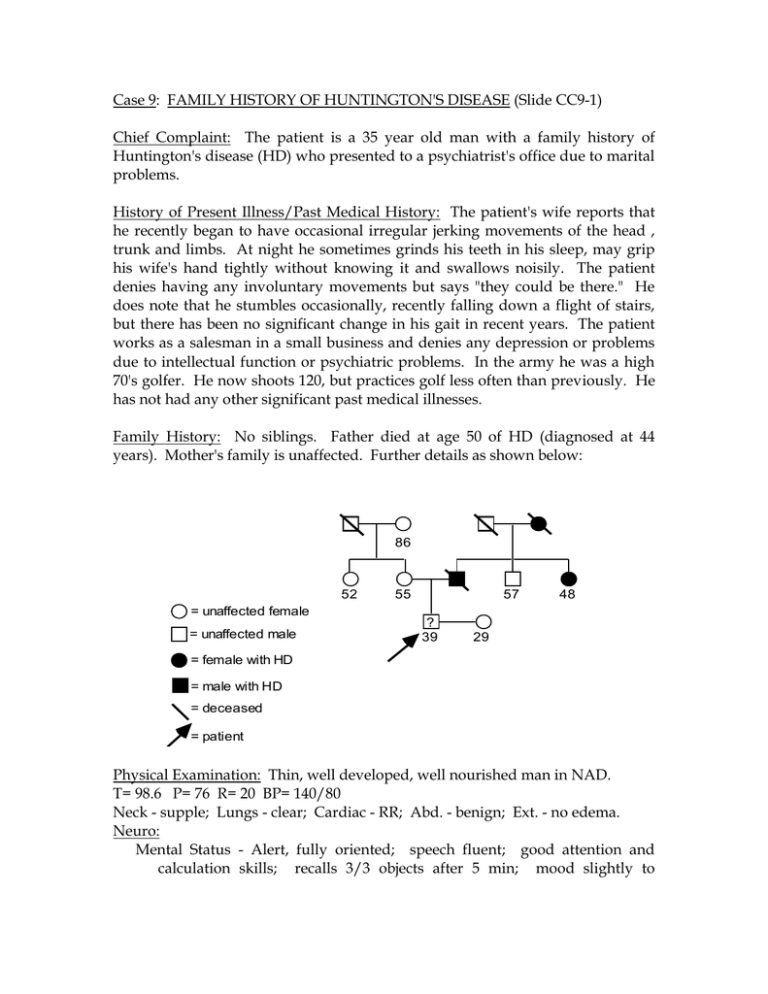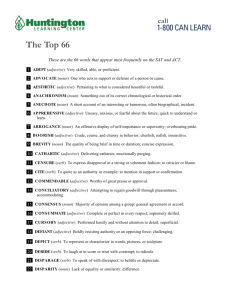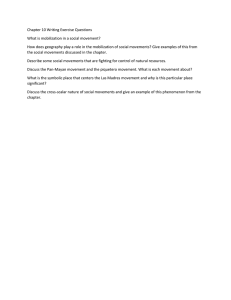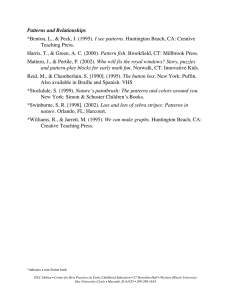Case 9: FAMILY HISTORY OF HUNTINGTON'S DISEASE (Slide CC9-1)
advertisement

Case 9: FAMILY HISTORY OF HUNTINGTON'S DISEASE (Slide CC9-1) Chief Complaint: The patient is a 35 year old man with a family history of Huntington's disease (HD) who presented to a psychiatrist's office due to marital problems. History of Present Illness/Past Medical History: The patient's wife reports that he recently began to have occasional irregular jerking movements of the head , trunk and limbs. At night he sometimes grinds his teeth in his sleep, may grip his wife's hand tightly without knowing it and swallows noisily. The patient denies having any involuntary movements but says "they could be there." He does note that he stumbles occasionally, recently falling down a flight of stairs, but there has been no significant change in his gait in recent years. The patient works as a salesman in a small business and denies any depression or problems due to intellectual function or psychiatric problems. In the army he was a high 70's golfer. He now shoots 120, but practices golf less often than previously. He has not had any other significant past medical illnesses. Family History: No siblings. Father died at age 50 of HD (diagnosed at 44 years). Mother's family is unaffected. Further details as shown below: 86 52 = unaffected female = unaffected male 55 57 ? 39 48 29 = female with HD = male with HD = deceased = patient Physical Examination: Thin, well developed, well nourished man in NAD. T= 98.6 P= 76 R= 20 BP= 140/80 Neck - supple; Lungs - clear; Cardiac - RR; Abd. - benign; Ext. - no edema. Neuro: Mental Status - Alert, fully oriented; speech fluent; good attention and calculation skills; recalls 3/3 objects after 5 min; mood slightly to moderately blunted with some apathy regarding emotional impact of the consultation, stating e.g. "If I've got it , I've got it." Cranial Nerves - normal except saccadic eye movements appear slowed. Motor - Rare irregular movements present in face, neck, trunk and arms. Tone mildly decreased in all four extremities. No atrophy. Strength normal (5/5) throughout. Reflexes - normal, 2+ symmetrical; Coordination - normal. Gait - normal. Slight difficulty with tandem (heel-toe) gait not commensurate with age. Involuntary movements not exaggerated by gait. Sensation -normal. Questions: 1. Which neuroanatomical structures are affected in Huntington's disease? 2. Review Slide E-1. Would you expect Huntington's disease to predominantly affect striatal neurons of the direct pathway (projecting to the globus pallidus internal segment and substantia nigra pars reticulata) or of the indirect pathway (projecting to the globus pallidus external segment)? 3. What features of this patient's presentation suggest that he may have HD? 4. Review the neurotransmitters of the pathways shown in Slide E-1. What types of medications do you think might help alleviate some of the motor symptoms of HD? 5. What is the inheritance pattern for HD?




